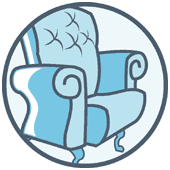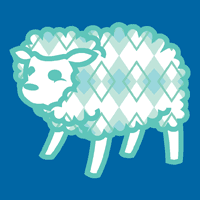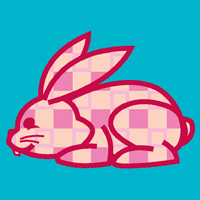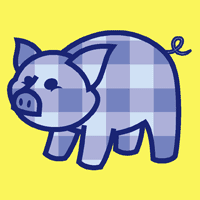

gouache
(goo-ahsh)
Gouache is a water-soluble paint that is opaque, rather than transparent like
watercolor. Gouache and watercolor paints can be used together.
White is one of the paint colors available in gouache, unlike watercolors,
where the paper is preserved, or kept pristine, as the white in the painting.
Source: painting.about.com
hue
(hyoo)
The actual color of something, such as red, green, or blue, or the name we
give a color. What we generally, but less technically correct, call color.
When a tube of paint says 'hue' on it, for example cadmium red hue, it means
that the color will be almost identical to genuine cadmium red, but the
pigment is something different. A tube of paint labelled as a 'hue' may be a
cheaper or blended version, it may be that the original color is no longer
produced (such as Indian yellow), or it may be that the original was not
lightfast (such as Hooker's Green).
Source: painting.about.com
gesso
(jes-oh)
The initial coating put on a support before you paint on it. It protects the
support from the paint, some of which contain components that could damage
it, provides the key (surface) for the paint to stick to, and affects the
absorbency of the support.
Source: painting.about.com
patina
(puh-tee-nuh)
A sheen or coloration on any surface, either unintended and produced by age or intended and produced by simulation or stimulation, which
signifies the object's age; also called aerugo, aes ustum, and verdigris. Typically a thin layer of greens (sometimes reds or blues),
usually basic copper sulfate, that forms on copper or copper alloys, such as bronze, as a result of oxidation and corrosion. Metal objects
have naturally acquired patinas when long buried in soil or immersed in water. Such naturally formed patinas have come to be greatly
prized. There are many formulae for the pickles and chemical treatments of metals which may be employed to encourage the formation of
patinas.
A person who produces patinas is a patineur.
Source: painting.about.com
alla prima
(ah-luh pree-muh)
Alla prima is a style of painting where, instead of building colors up with
layers or glazing over an underpainting, the painting is completed while the
paint is still wet. Strictly defined, an alla prima painting would be started
and finished in one painting session, but the term is also more loosely applied
to any painting done in a direct, expressive style, with minimal preparation.
Alla prima comes from Italian, literally meaning "at once". The French term is
"premier coup".
Famous painters who worked in an alla prima style are as diverse as Paul Cezanne,
John Singer Sargent, Mary Cassatt, Winslow Homer, Caravaggio, Hieronymus Bosch,
and Frans Hals.
Source: painting.about.com
assemblage
(uh-sem-blij)
An assemblage is a category of sculpture constructed ("assembled") from found
or scavenged objects and man-made materials. The term was first used in 1953
by the French artist and writer Jean Dubuffet. The boxes of Joseph Cornell and
Combines of Robert Rauschenberg are examples of assemblage.
Assemblage differs from collage in (theoretically) being a three-dimensional
artwork, whereas collage is two dimensional, though the boundary between the
two can be blurred.
Source: painting.about.com
surrealism
(suh-ree-uh-liz-uh-m)
Surrealism is an art movement started in the 1920s which focuses on the subconscious,
the fantastic, the interpretation of dreams, and the juxtaposition of unlikely
elements.
Key exponents included Salvador Dali and Rene Magritte.
Source: painting.about.com
tortillon
(tor-ti-yon)
A tortillon is a rolled stick of paper fiber, shaped to a point at each end, used to
blend and smudge pencil and charcoal. Tortillons may be purchased from an art store,
or you can make your own by tightly rolling a tube of paper. A piece of clean rag wrapped
over a finger or folded to a point can also do the same job. Make-up applicators and cotton
q-tips can also be used, though results vary according to the absorbency of the chosen material.
Also Known As: blending stump, torchon.
Source: drawsketch.about.com
mosaic
(moh-zey-ik)
The decoration of a surface with small juxtaposed fragments (tesserae) of glass, enamel,
stone, or ceramic arranged according to a design traced on a specially prepared base.
Source: mosaicartsource.com
tesserae
(tes-er-uh)
Small, usually square pieces of glass or other material used to make a mosaic. Their size
generally ranges from a few millimetres to two centimetres long and five to ten millimetres
thick. The term derives from the Greek word meaning "four-sided".
Source: mosaicartsource.com
opus
(oh-puh-s)
A creative piece of work in any field of the arts. In mosaic art, opus refers to the technique
of positioning the tesserae.
Source: mosaicartsource.com
appliqué
(ap-li-key)
A design made by stitching pieces of colored fabric onto a larger piece of cloth. Appliqué is used
for wall hangings and as decoration on clothing, quilts and pillows.
Source: artlex.com
cameo
(kam-ee-oh)
A small-scale low relief in a stratified or banded material, usually a gemstone such as onyx or sardonyx,
but also in calcite alabaster or shell or glass, in which the ground is of one color and the figure in
relief in another color or colors.
Source: artlex.com
casein
(kay-seen)
Casein is a white, tasteless, odorless protein precipitated from milk by rennin. Casein is the
basis of cheese, and is used to make plastics, adhesives, and foods, as well as paint. Casein
paint can be used on paper or board for light impasto, for underpainting, wall decoration, etc.
Casein paint is too inflexible for use on canvas.
It dries quickly with a waterproof surface, and may be varnished.
Source: artlex.com
caricature
(kar-i-kuh-choo-r)
A representation in which the subject's distinctive features or peculiarities are deliberately exaggerated
to produce a comic or grotesque effect. Also, the art of making such representations.
Caricature is most common in drawings and editorial cartoons, but Honoré Daumier (French, 1808-1879) made
several sculptural examples.
Source: artlex.com
beret
(buh-rey)
A round, soft brimless tam (hat). It fits snugly, and is often worn angled to one side. It has long been a
traditional mode of head-covering throughout Europe, and now other parts of the world. Men, women and children
of all walks have worn it, and continue to, but it has been popularly associated with artists since the
nineteenth century, to the extent that the stereotypical artist is depicted wearing a beret.
Source: artlex.com
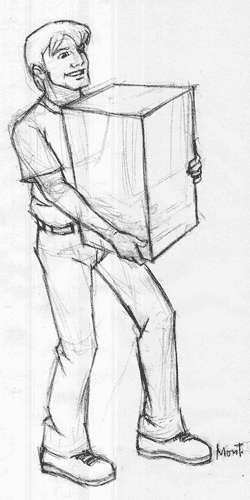
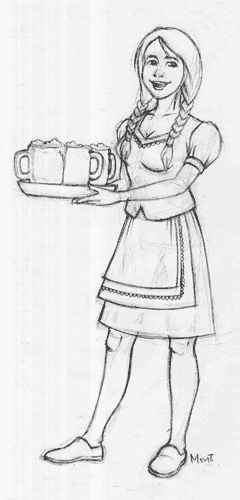
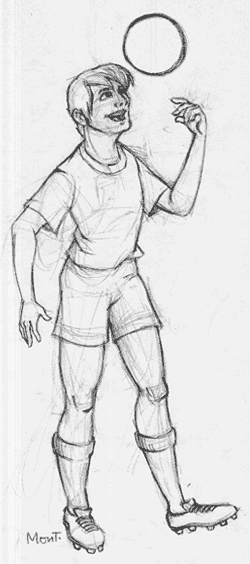
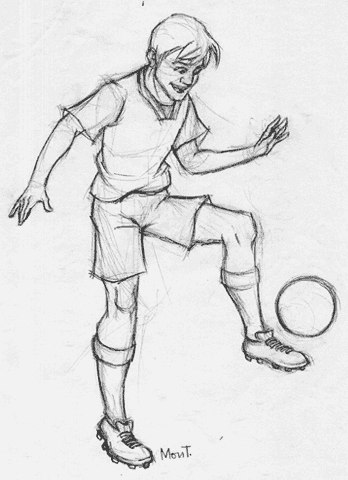
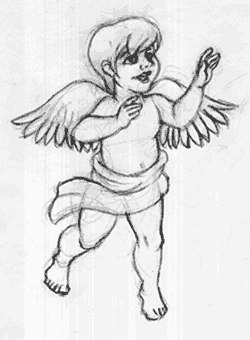
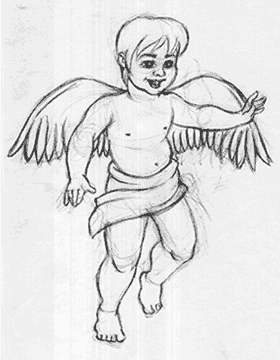

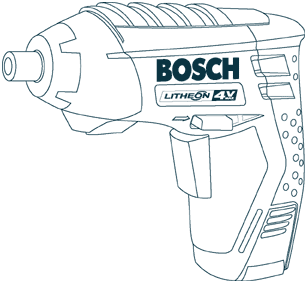
Sample of a technical illustration rendered in vector graphic format.



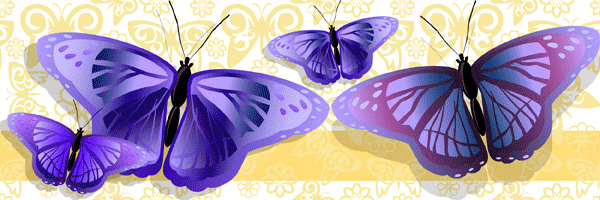









Illustrations used as buttons and icons for web links and other related functions.






